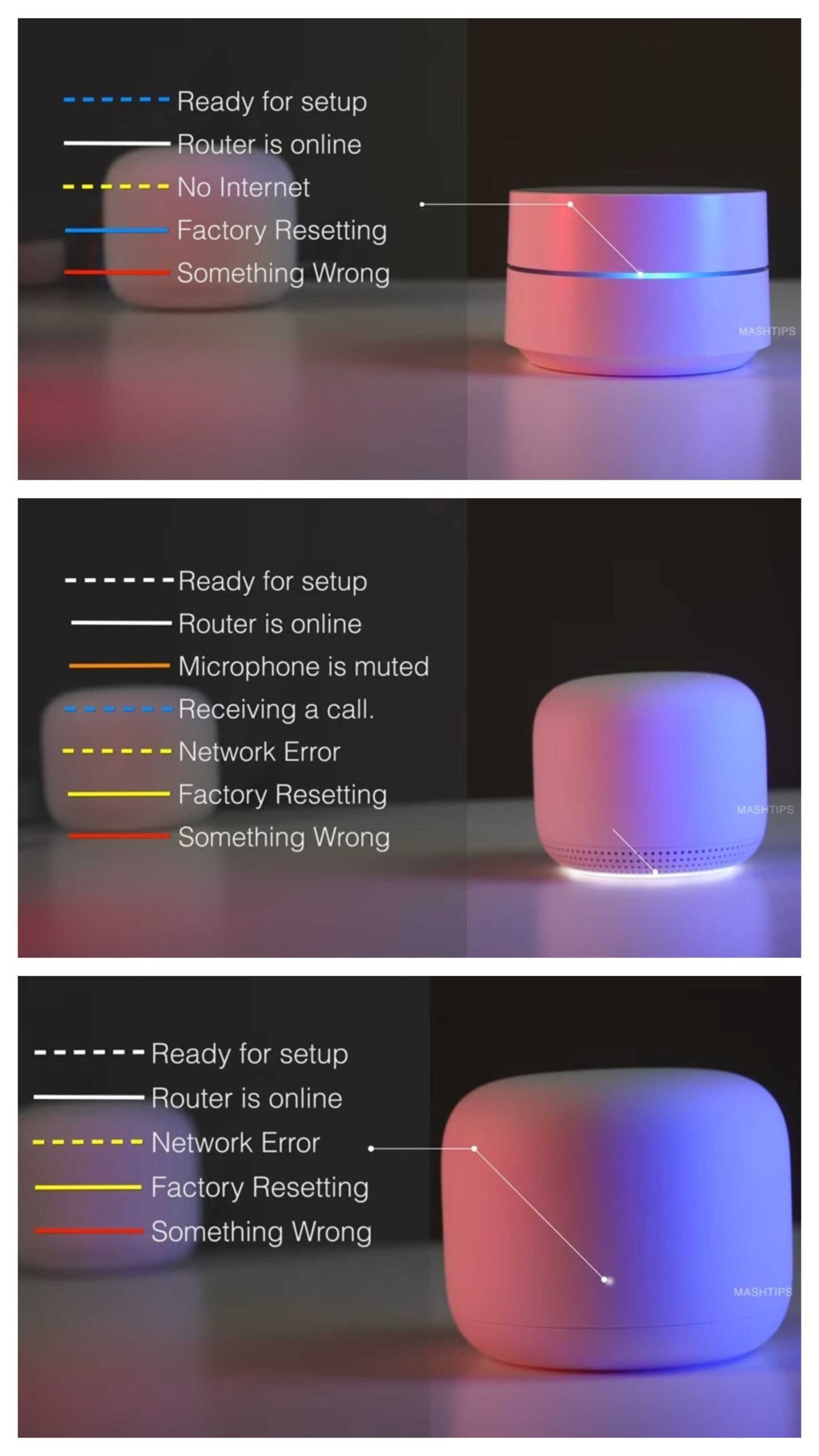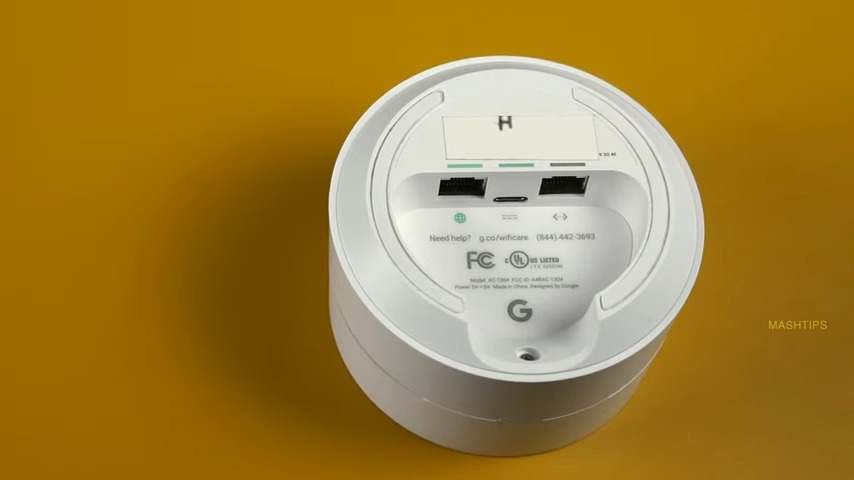Nest Wi-Fi vs. Google Wi-Fi: Which One is Better?
Google first entered into mesh networks in 2016 with the introduction of Google WiFi, and in 2019
Mesh Networking
Before we jump into all the specs and comparisons, let’s first see what mesh networking is. In a mesh network, the main router provides the signal, and multiple points (devices) are placed all over the location to extend those signals at the same speed such that there are no WiFi blind spots and speed drops, while maintaining the same SSID.
Google WiFi uses identical devices for routers and points (range extenders). This means if you buy a set of 3 Google WiFi devices, any device can be used as a modem, whereas the other two will be used as points.

On the other hand, Nest WiFi has separate devices for
Design and Appearance .
Google WiFi has an almost cylindrical shape, a curved bottom and a flat top. It has a slight separation in the middle of its seamless body that houses a horizontal ring LED. Nest WiFi devices are marshmallow-shaped, with round edges, flat bases, and tops. The router has a small LED light in the middle of its body, whereas the points have a horizontal ring-shaped LED at the borders of its base.

Google WiFi devices come in one standard color, white. Nest WiFi router also only comes in white. However, Nest points come in 3 colors: white, pink, and grey. Due to this, they can be better accommodated in their environment and, due to their design, can also be considered decoration pieces. The dimensions of each device are as follows:
- Google WiFi:
4.1-inch diameter and height of 2.7-inches - Nest WiFi Router: 4.3-inch diameter and height of 3.6-inches
- Nest WiFi Point: 4-inch diameter and height of 3.4-inches
Features of Devices
Google WiFi router is a straightforward device. It has no assistant, no mic and no speaker. There are no touch controls, but a few physical buttons are present. On the bottom of Google WiFi are ethernet and USB-C charging ports. Aside from the primary router, you can also use the points to connect PCs or other wired devices to the internet using an ethernet cable. There is also a hard reset button on the router to reset the device completely.

The Nest WiFi devices are ingenious. They have Google Assistant, a speaker and a mic to hear you. This gives you a significant amount of control over the device. You can ask about the weather, and the time, conduct a quick internet speed test, or ask general questions. The device has a capacitive touch screen, so you can control it by touching it. There is also a dedicated mic on/off switch, which you can turn off to keep complete privacy.
At the bottom of Nest WiFi devices, there are no ethernet ports. It is entirely wireless in terms of internet output, with only a proprietary power adapter. which is a surprise as its predecessor had a USB-C charging port. Power ratings for the device as 14V/15W which guarantees a decent charging speed.
Specifications and Range
As both the devices are released three years apart, some impressive hardware upgrades exist. Google WiFi has an AC1200 speed rating, whereas Nest WiFi has an AC2200 speed rating. This means that, between 2.4 GHz and 5 GHz, 2200 Mbps speed is expected in Nest WiFi, whereas 1200 Mbps is expected in Google WiFi. Both routers are capable of automatically switching between networks.
There is also an upgrade in the antennas of Nest WiFi. Nest WiFi has a 4×4 configuration, whereas Google WiFi has a 2×2 antenna configuration. This increases the transmission of signals, making them stronger. Nest WiFi also has an increased coverage area. According to laboratory standards, Google WiFi has a coverage area of 1500 sq. feet, Nest WiFi router has a coverage area of 2200 sq. feet, whereas its point has a coverage area of 1600 sq. feet.
Some general specs include WPA3 protection for Nest WiFi and WPA2 protection for Google WiFi. Nest has 1 GB RAM; Google has 512 MB RAM. Both routers have ethernet connections, but Nest points do not have an ethernet connection. Google WiFi has 4GB eMMC Storage which is slower than the 4GB Flash storage of Nest WiFi.
App Controls
Both WiFi devices are easily controllable through applications. Google WiFi has a dedicated Google WiFi app. It makes it super easy to set up your network, add more points, etc. Nest WiFi can also be controlled through the main Google Home app, alongside your Google Assistant and other smart devices; however, advanced settings of Nest WiFi, such as network type etc., can only be accessed through the Google WiFi app.
These apps provide you great control over your WiFi devices. You can assign different names to WiFi routers and points. You can see what devices are connected to the router or points, group them and turn off the internet connection to specific devices. Touch controls on Nest WiFi points are configured using the app. Speaker volume and equalizer settings, such as Bass, can be controlled through dedicated applications. You can also change the LED brightness of WiFi router and points using the app.

Inter Compatibility
It is also possible to use the devices of both lineups together. You may want to do this as you might not have enough balance to buy all the new devices or want to retain the ethernet connection while upgrading.
Nest WiFi is compatible with Google WiFi. This means that Google WiFi devices as points to extend the network. A combo of Nest points and Google WiFi points is also possible. This is extremely useful if you have devices that use an ethernet connection.
Use Nest WiFi points for the rest of the house to extend WiFi signals, and use a Google WiFi point where you need an Ethernet connection. Integrating a Google WiFi device into the Nest WiFi network using the app is straightforward.
The same is the case with Google WiFi; If you are using Google WiFi as the primary point, Nest WiFi points can be used alongside to extend the network. However, there is the disadvantage of the speed difference, as both devices come with different hardware, so speed transmission won’t be as seamless and will be a little bit slow.

Availability and Cost
Google discontinued the Google WiFi devices after the launch of Nest WiFi; however, due to much public demand, it was reintroduced and is now readily available alongside the Nest WiFi device and router. They are available on Google Store, Amazon, Walmart, etc.
As for the pricing, one Google WiFi Device costs $99 whereas 3 Google WiFi Devices deal costs $199. Nest WiFi router costs $169, one router and one point cost $269, and one router and two points cost $349 on the Google store. You should also check out other online and physical stores in case they are providing a better offer.
Which One Should You Choose?
After looking at all the detailed comparisons, you might already have decided which one you want to get. It can be the Nest WiFi network, Google WiFi network or a combo of both.
But if money is no problem, you should go with the faster, more coverage-providing Nest WiFi. Suppose you want to spend as less money as possible and can compromise on smart features like Google Assistant while getting a capable internet speed. In that case, Google WiFi is definitely for you.
 Reviewed by
Reviewed by 




